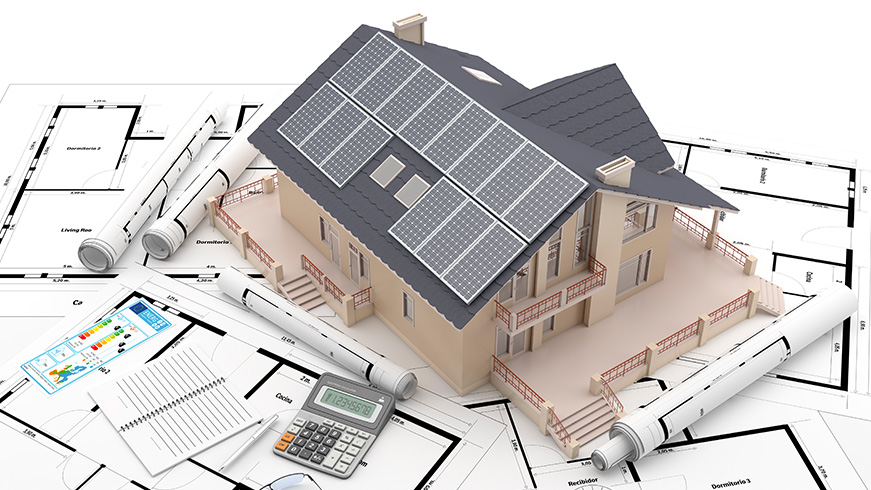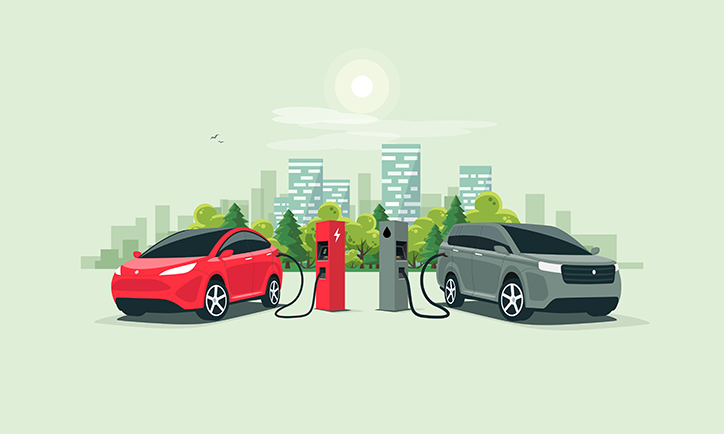In today’s world, the impact of our carbon footprint on the environment is undeniable. While many people are aware of how travel—by car or plane—contributes to greenhouse gas emissions, fewer consider the environmental impact of their home energy use. The average American household generates over 14,920 pounds of CO2 annually (U.S. Energy Information Administration), contributing to 12% of the United States’ total greenhouse gas emissions (Environmental Protection Agency). Since 1990, household emissions have risen by 11%, highlighting the urgent need for energy-efficient changes at home.
How Your Electricity Source Affects Your Carbon Footprint
Electricity use significantly contributes to your home’s carbon footprint. The source of your electricity determines how much carbon is emitted when powering your home. Traditional fossil fuel-powered plants release significantly more emissions than renewable energy providers such as solar energy services, wind energy solutions, hydroelectric power providers, and geothermal energy options (U.S. Department of Energy). Transitioning to clean energy solutions—whether through residential renewable energy installations like solar panels or selecting a green energy supplier—can dramatically reduce emissions.
Additionally, energy efficiency measures such as using LED light bulbs, ensuring proper home insulation, and investing in ENERGY STAR-certified appliances can lower electricity consumption, reducing your household’s environmental impact and energy costs (ENERGY STAR).
Upgrade to Energy-Efficient Appliances
Older, outdated appliances consume excessive electricity, increasing both your energy bills and carbon footprint. Upgrading to high-efficiency appliances, particularly ENERGY STAR-certified models, can lead to substantial energy savings. Some key home upgrades include:
- Modern HVAC systems: A high-efficiency furnace, boiler, or heat pump reduces energy waste.
- Efficient refrigerators and dishwashers: These appliances now use 50% less energy than models from just a decade ago (U.S. Department of Energy).
- Smart home technology: Smart thermostats help optimize heating and cooling, reducing wasted energy.
By investing in these upgrades, you can reduce electricity consumption while enhancing sustainability.
Water Use and Its Hidden Carbon Footprint
Water usage contributes to carbon emissions in ways many homeowners overlook. Heating water for showers, dishwashing, and laundry requires energy, while water treatment facilities also emit greenhouse gases. To reduce your impact:
- Install low-flow showerheads and toilets to cut water use (EPA WaterSense).
- Turn off the faucet when brushing your teeth or washing dishes.
- Opt for energy-efficient water heaters that use less electricity or integrate solar thermal systems (Department of Energy).
Making simple changes to water consumption can significantly decrease your home’s carbon footprint while lowering utility bills.
The Importance of Recycling and Waste Reduction
Household waste disposal plays a significant role in emissions. Items thrown in the trash decompose in landfills, releasing methane, a greenhouse gas 25 times more potent than CO2 (EPA Landfill Methane Outreach Program). Recycling minimizes this impact by reducing landfill waste and cutting down on the need for new product manufacturing, which generates additional emissions.
To reduce waste and emissions:
- Recycle paper, plastic, and glass whenever possible.
- Compost food waste to keep organic materials out of landfills.
- Choose reusable alternatives over single-use plastics, such as glass water bottles and cloth shopping bags.
By adopting sustainable waste management practices, you help combat climate change and reduce the strain on natural resources.
Take Action: Small Changes Make a Big Difference
Every effort to reduce household emissions contributes to a more sustainable future. Whether it’s switching to a renewable energy provider, upgrading appliances, conserving water, or embracing recycling, small changes add up. Commercial green energy plans and sustainable electricity plans are now more accessible, making it easier than ever to transition to environmentally responsible living.
By making smarter energy choices and incorporating these simple solutions, we can collectively reduce our carbon footprint and protect the planet for future generations.



